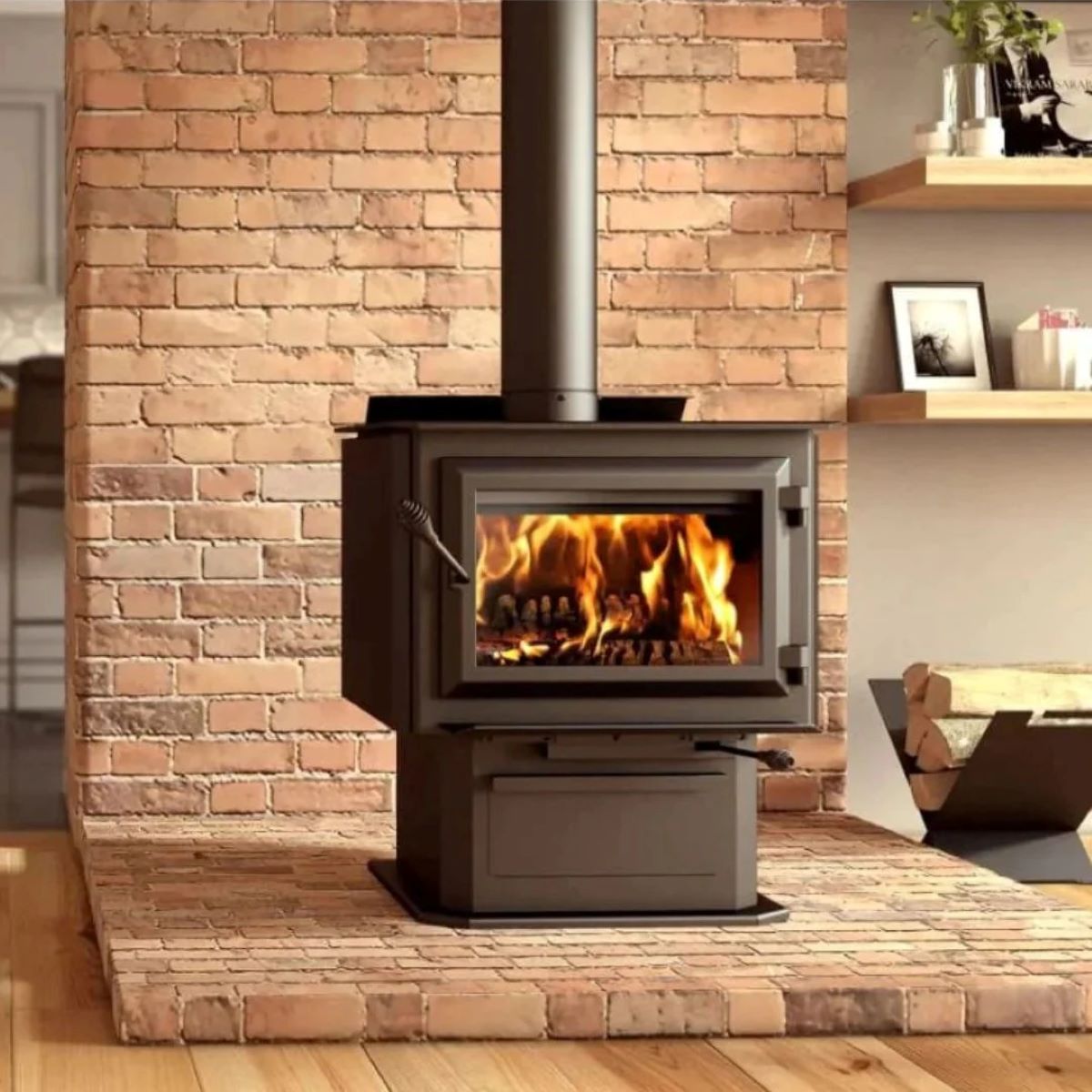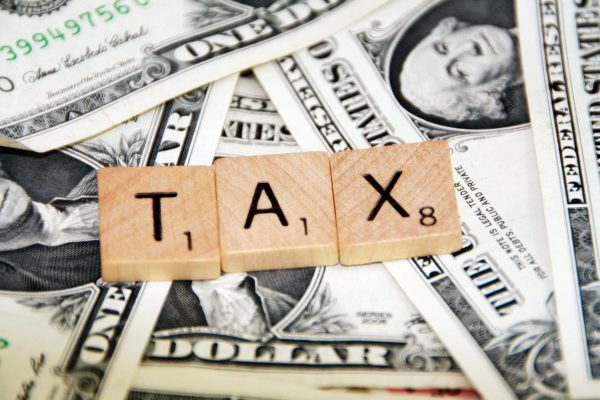Home>Finance>How Does The 26% Tax Credit For Wood Stove Work?


Finance
How Does The 26% Tax Credit For Wood Stove Work?
Published: January 6, 2024
Learn how the 26% tax credit for wood stove can help you save on finances. Find out the details and benefits of this tax credit.
(Many of the links in this article redirect to a specific reviewed product. Your purchase of these products through affiliate links helps to generate commission for LiveWell, at no extra cost. Learn more)
Table of Contents
Introduction
Welcome to the world of wood stoves and tax credits! If you are considering purchasing a wood stove for your home, you might be pleasantly surprised to know that there is a tax credit available to help offset the cost. The 26% tax credit for wood stoves is a fantastic way to incentivize homeowners to make energy-efficient choices and reduce their carbon footprint.
Wood stoves have been a popular choice for heating homes for centuries, providing warmth, comfort, and even a cozy ambiance. However, traditional wood stoves are not known for their energy efficiency, which can lead to higher heating bills and increased greenhouse gas emissions. To encourage individuals to upgrade to more efficient wood stoves, the government introduced the 26% tax credit as part of a broader effort to promote renewable energy sources and reduce dependence on fossil fuels.
By taking advantage of this tax credit, homeowners can not only enjoy the benefits of a more efficient wood stove but also receive a substantial financial incentive. In this article, we will explore the ins and outs of the 26% tax credit for wood stoves, including eligibility requirements, how the tax credit works, and how to claim it. So, let’s dive in and learn more about this fantastic opportunity to save money while embracing sustainable heating options for your home.
What is the 26% Tax Credit for Wood Stoves?
The 26% tax credit for wood stoves is a federal incentive program introduced to encourage homeowners to invest in energy-efficient wood stoves. This tax credit allows eligible individuals to claim a credit of 26% of the total cost of purchasing and installing a qualified wood stove in their primary residence.
It’s important to note that the tax credit is based on the total cost, including both the purchase price of the wood stove and any associated installation expenses. This means that not only can you save money on the purchase itself, but you can also reduce the overall installation costs.
The 26% tax credit is part of the Residential Energy Efficient Property Credit, which was extended through 2023 as part of the Consolidated Appropriations Act of 2021. This credit applies to qualifying wood stoves that meet specific energy efficiency requirements, ensuring that homeowners invest in high-performing and eco-friendly options.
This tax credit is a significant financial advantage for homeowners who are looking to upgrade their heating systems and reduce their reliance on traditional fossil fuels. By choosing a qualified wood stove, you not only gain the benefits of a more efficient and cost-effective heating solution but also enjoy the added bonus of saving money on your tax bill.
It’s worth mentioning that the tax credit for wood stoves can be combined with other available incentives and local utility rebates, further maximizing your savings. However, it’s important to consult with a tax professional or financial advisor to understand the specific eligibility requirements and how the tax credit may apply to your individual circumstances.
Now that you understand the basics of the 26% tax credit for wood stoves, let’s explore the eligibility requirements to determine whether you qualify for this fantastic opportunity to save money and embrace energy-efficient heating.
Eligibility Requirements for the Tax Credit
While the 26% tax credit for wood stoves is a fantastic opportunity for homeowners, it’s essential to understand the eligibility requirements before making any purchasing decisions. To qualify for the tax credit, you must meet the following criteria:
- Your wood stove must be installed in your primary residence. The tax credit does not apply to second homes or rental properties.
- The wood stove must be a qualified energy-efficient model that meets the specific requirements set by the Internal Revenue Service (IRS). These requirements often include meeting specific emissions standards and having a high energy efficiency rating.
- The purchase and installation of the wood stove must be completed within the eligible tax year. Typically, this refers to the calendar year in which the wood stove is installed.
- You must have proper documentation to support your claim, including receipts, invoices, and any other relevant paperwork. This documentation should clearly show the purchase price, installation costs, and the energy efficiency rating of the wood stove.
- The tax credit may be limited to a specific dollar amount. It’s important to review the current tax laws and regulations to determine the maximum credit amount you can claim for the tax year.
It’s crucial to note that eligibility criteria may vary, and it’s always advisable to consult with a tax professional or financial advisor to ensure that you meet all the necessary requirements. They can provide guidance specific to your circumstances and help you navigate the process of claiming the tax credit accurately.
By understanding the eligibility requirements for the tax credit, you can determine if you qualify and confidently proceed with purchasing an eligible wood stove. Next, let’s delve into how exactly the 26% tax credit for wood stoves works and how it can benefit you financially.
How Does the 26% Tax Credit Work?
The 26% tax credit for wood stoves is designed to provide financial relief to homeowners who choose to invest in energy-efficient heating options. Here’s a breakdown of how the tax credit works:
- Calculate the total cost: Determine the total cost of purchasing and installing a qualifying wood stove in your primary residence. This should include the purchase price of the wood stove and any associated installation expenses.
- Apply the tax credit percentage: Multiply the total cost by the tax credit percentage, which is 26% in this case. This will give you the amount of the tax credit you can claim on your tax return.
- File your taxes: Include the amount of the tax credit on your federal tax return, using the appropriate form and instructions provided by the IRS.
- Reduce your tax liability: The tax credit directly reduces the amount of tax you owe. For example, if the calculated tax credit is $3,000 and you have a tax liability of $10,000, your new tax liability will be reduced to $7,000.
- If the tax credit exceeds your tax liability: If the calculated tax credit exceeds your tax liability for the year, you may carry forward the unused portion to subsequent tax years. Consult with a tax professional to understand the specific rules and limitations regarding carryforwards.
It’s important to note that the tax credit is non-refundable, meaning it can only be used to reduce your tax liability to zero. It cannot exceed the total amount of tax you owe, nor can it be refunded as cash.
Additionally, it’s crucial to keep thorough documentation of your wood stove purchase and installation expenses. This documentation will serve as evidence to support your claim should the IRS require verification.
Now that you have a clear understanding of how the 26% tax credit for wood stoves works, let’s explore the process of claiming the tax credit to ensure you receive the maximum benefit.
How to Claim the Tax Credit
Claiming the 26% tax credit for wood stoves requires proper documentation and accurate filing on your federal tax return. Here are the steps to successfully claim the tax credit:
- Keep thorough records: Maintain detailed records of your wood stove purchase and installation expenses, including receipts, invoices, and any other relevant documentation. These records will serve as evidence to support your claim.
- Fill out the appropriate tax forms: When filing your federal tax return, complete the necessary forms to claim the Residential Energy Efficient Property Credit. The specific form you need to fill out will depend on your tax filing status and other factors. Common forms include Form 5695 and Form 1040.
- Enter the eligible amount: On the appropriate form, enter the total eligible amount of your wood stove purchase and installation expenses. This amount will be used to calculate the tax credit.
- Calculate the tax credit: Multiply the total eligible amount by the tax credit percentage to determine the amount of the tax credit you can claim. For example, if your total eligible amount is $5,000, the tax credit would be $1,300 (26% of $5,000).
- Follow the instructions: Follow the instructions provided by the IRS for properly completing the tax forms and including the tax credit amount on your federal tax return. This may involve transferring the tax credit amount to a specific line or schedule on the tax forms.
- Submit your tax return: Submit your tax return by the appropriate deadline, usually April 15th of each year. Ensure that all forms and schedules are accurately filled out and signed.
It’s important to note that claiming the tax credit for wood stoves may require additional documentation or forms specific to your state or locality. Be sure to check with your state’s tax agency or local government to understand any additional requirements.
It’s also advisable to consult with a tax professional or financial advisor who can guide you through the process of claiming the tax credit and ensure that you meet all the necessary requirements.
By following these steps and accurately claiming the tax credit, you can maximize your savings and enjoy the financial benefits of investing in an energy-efficient wood stove.
Next, let’s explore the potential savings you can achieve with the 26% tax credit for wood stoves.
Potential Savings with the Tax Credit
The 26% tax credit for wood stoves offers homeowners a significant opportunity to save money on their heating expenses while embracing energy efficiency. By taking advantage of this tax credit, you can experience several potential savings:
- Reduced upfront costs: The tax credit allows you to offset a portion of the total cost of purchasing and installing a qualified wood stove in your primary residence. This means you can enjoy reduced upfront expenses when investing in an energy-efficient heating solution.
- Lower heating bills: Energy-efficient wood stoves are designed to optimize heat output while minimizing fuel consumption. By upgrading to a qualified wood stove, you can experience lower heating bills throughout the year, especially during colder months when heating demands are higher.
- Long-term financial benefits: Energy-efficient wood stoves not only offer immediate cost savings but also provide long-term financial benefits. With reduced energy consumption, you can enjoy ongoing savings on your monthly utility bills, ultimately recouping your investment over time.
- Environmental impact: By choosing a qualified wood stove and reducing your reliance on fossil fuels for heating, you contribute to a cleaner environment. Wood stoves with high energy efficiency ratings produce fewer emissions and help reduce your carbon footprint.
- Incentives and rebates: The 26% tax credit for wood stoves can often be combined with other incentives and rebates offered by local utility companies and state or local governments. These additional savings further enhance your potential overall savings.
It’s important to note that the actual dollar amount of savings will depend on various factors such as the cost of the wood stove, installation expenses, your heating needs, and your local energy rates. However, by taking advantage of the tax credit and investing in an energy-efficient wood stove, you can significantly reduce your heating costs and enjoy long-term financial benefits.
Remember to consult with a tax professional or financial advisor to assess your specific circumstances and determine the potential savings you can achieve through the 26% tax credit for wood stoves.
With the potential savings in mind, let’s now summarize the key points discussed in this article.
Conclusion
The 26% tax credit for wood stoves is an excellent opportunity for homeowners looking to invest in energy-efficient heating solutions while also enjoying financial savings. This tax credit incentivizes the purchase and installation of qualified wood stoves in primary residences, offering a 26% credit on the total cost.
By taking advantage of this tax credit, homeowners can experience reduced upfront costs, lower heating bills, and long-term financial benefits. Energy-efficient wood stoves not only provide immediate savings but also contribute to a cleaner environment by reducing emissions and carbon footprint.
To claim the tax credit, it’s essential to meet the eligibility requirements, maintain proper documentation, and accurately fill out the necessary tax forms. Consulting with a tax professional or financial advisor can provide valuable guidance throughout the process and ensure compliance with all the necessary regulations.
It’s important to note that the potential savings with the tax credit will vary based on individual circumstances such as the cost of the wood stove, installation expenses, and local energy rates. However, by investing in an energy-efficient wood stove and claiming the tax credit, homeowners can make significant strides towards reducing heating expenses and embracing sustainable heating options.
Remember to research and explore any additional incentives or rebates offered by local utility companies or state and local governments, as these can further enhance your overall savings.
In conclusion, the 26% tax credit for wood stoves is a valuable opportunity to save money, reduce environmental impact, and enjoy the benefits of a more efficient heating solution. So, if you’re considering upgrading your heating system, now is the time to explore the options, consult with professionals, and take advantage of this remarkable tax credit.














